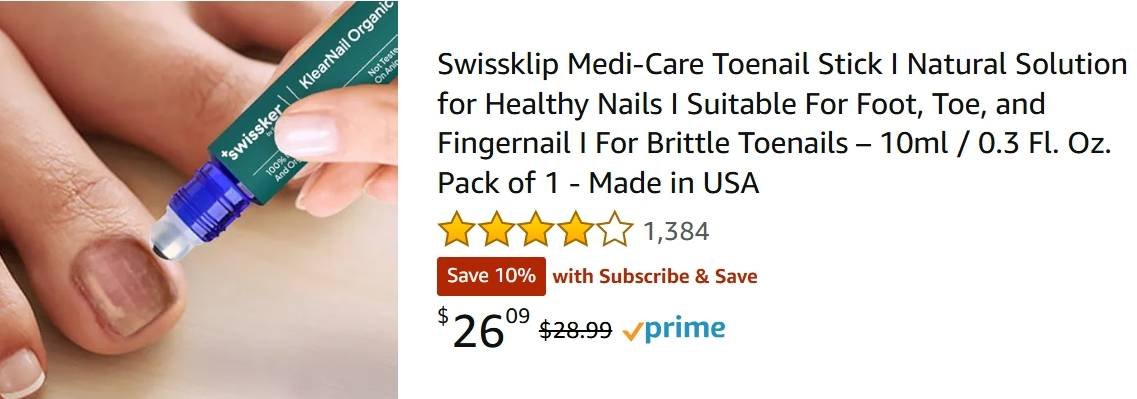
When Do Thick Toenails Require Medical Treatment?
Thick toenails are more than just a cosmetic concern. While some cases are harmless and manageable at home, others signal an underlying medical condition that requires professional treatment. Ignoring persistent thickening can lead to pain, infections, and complications, especially for individuals with diabetes or circulation problems.

Common Causes of Thick Toenails
Understanding why toenails thicken helps determine whether medical attention is necessary. Some of the most common causes include:
1. Fungal Infections (Onychomycosis)
Fungal infections are a leading cause of thick toenails. Symptoms include discoloration, brittleness, and a crumbly texture. While mild infections may respond to over-the-counter antifungal treatments, severe or recurring infections often require prescription medications.
2. Psoriasis and Other Skin Conditions
Psoriasis and eczema can cause nail thickening, ridges, and discoloration. If the toenails appear pitted or detached from the nail bed, a dermatologist or podiatrist should assess the condition.
3. Trauma and Repeated Pressure
Injuries from sports, tight shoes, or repetitive impact can cause nails to thicken. While minor trauma heals over time, chronic thickening may require medical intervention to prevent further damage.
4. Aging and Reduced Circulation
As people age, nail growth slows, and the nails naturally thicken. Poor circulation from diabetes or peripheral artery disease (PAD) can worsen the condition. If thick toenails become painful or difficult to manage, a doctor should evaluate the underlying cause.
5. Autoimmune or Systemic Conditions
Diseases like lupus, rheumatoid arthritis, and peripheral neuropathy can cause nail abnormalities. When thick toenails accompany other symptoms, a medical consultation is essential to rule out systemic issues.
Signs That Medical Treatment Is Needed
Not all thick toenails require a doctor’s visit, but certain warning signs indicate a more serious problem:
1. Persistent Pain or Discomfort
Thickened nails can press against the skin, causing pain when walking or wearing shoes. If discomfort persists despite trimming, medical intervention is needed.
2. Yellow, Brown, or Green Discoloration
A change in nail color can indicate a fungal or bacterial infection. If the discoloration spreads or worsens, a podiatrist may recommend oral or topical antifungal treatments.
3. Foul Odor or Nail Crumbling
A strong smell or crumbling nails suggest an advanced fungal infection. Delaying treatment can lead to nail loss or spread of infection to surrounding tissues.
4. Difficulty Trimming the Nails
If nails become too thick to cut with standard clippers, a podiatrist can safely trim them and provide guidance on managing growth.
5. Signs of Infection (Redness, Swelling, Pus)
An infected toenail may cause swelling, redness, and pus drainage. This requires prompt medical attention to prevent the infection from spreading.
6. Underlying Health Conditions (Diabetes, PAD, Immune Disorders)
People with diabetes or circulation issues should not ignore thick toenails. Reduced blood flow can slow healing, increasing the risk of serious foot complications.
Treatment Options for Thick Toenails
1. Prescription Antifungal Medications
- Oral antifungals: Medications like terbinafine or itraconazole target fungal infections from within.
- Topical treatments: Prescription-strength creams or medicated nail lacquers help clear up mild infections.
2. Professional Nail Trimming and Debridement
A podiatrist can trim thickened nails using specialized tools, reducing pressure and discomfort. In some cases, partial nail removal may be necessary.
3. Laser Therapy for Fungal Infections
Laser treatments target fungal spores without damaging the nail. This non-invasive option is effective for stubborn fungal infections.
4. Managing Underlying Health Conditions
If thick toenails are caused by an autoimmune disease, diabetes, or circulatory issues, treating the root cause helps prevent further nail problems.
When to See a Doctor
If thick toenails are causing pain, spreading infection, or interfering with daily activities, consult a medical professional. Early intervention prevents complications and ensures proper foot health.
Final Thoughts
Thick toenails are often manageable, but persistent or worsening symptoms require medical attention. Identifying the cause early and seeking professional treatment can prevent pain, infection, and long-term complications. If home care isn’t improving the condition, a doctor’s evaluation is the best course of action.
